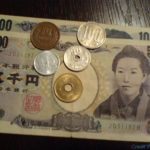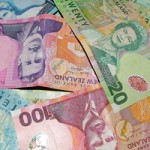The euro traded lower against the US dollar on Friday, heading for its largest two-week drop in over 1 year, as Standard & Poor’s revised down Frances long-term credit rating, which boosted the pressure upon the single currency, especially after yesterdays rate decision by the European Central Bank.
EUR/USD slipped to a session low at 1.3389 at 6:07 GMT, after which consolidation followed at 1.3415, dipping 0.03% for the day. Support was likely to be received at November 7th low, 1.3298, while resistance was to be met at November 7th high, 1.3529.
Standard & Poors underscored that France’s slower economic growth would restrain government’s ability to improve public finances. Nation’s long-term foreign and local-currency rating was reduced by one step to AA from AA+. The country has lost its top rating at Standard & Poors in January 2012. Experts at the ratings agency also said that macroeconomic reforms by the government might not considerably improve growth outlook in an intermediate term. The outlook on the grade, however, has been revised up to “stable” from “negative”, as French policymakers remained committed to strictly follow their objective not to allow an increase in debt. The odds of a further change in countrys credit rating in the next 2 years were less than 33%, according to the agency.
Yesterday EUR/USD cross lost over 150 pips, after the European Central Bank, at its meeting on policy, decided to reduce borrowing costs by 0.25% to a new record low level of 0.25%. The central bank also maintained its deposit rate at zero and pared the marginal lending rate to 0.75%. The chances increased that the bank may consider using unconventional tools such as quantitative easing or a negative deposit rate, in case consumer prices in the Euro region continue slowing down or the economic recovery remains frail.
In addition, ECB President Mario Draghi, at the press conference following banks rate decision, reiterated that the benchmark interest rate in the region will remain at the present or lower levels until signs of improving economic conditions appear, which also might be taken as an indication that further rate cuts are still possible. “With the ECB reaffirming its easing bias, the euro will remain heavy,” said Yuki Sakasai, a foreign-exchange strategist in New York at Barclays Plc., cited by Bloomberg. “People will be watching euro zone inflation very carefully.”
Meanwhile, the non-farm payrolls in the United States probably rose by 120 000 in October, after a gain of 148 000 jobs in September, according to a survey of experts by Bloomberg News. Official figures by the Labor Department are to be released later in the day.
Yesterday the US dollar demonstrated an additional advance against the common currency, as it became clear that US economy expanded at a sharper than expected rate during the third quarter of the year. Nation’s Gross Domestic Product rose at an annualized rate of 2.8% in Q3, following the 2.5% expansion in Q2, and marking the best quarterly performance this year. Expectations pointed a 2.0% increase in GDP.
Elsewhere, the euro was higher against the pound, with EUR/GBP cross up 0.07% on a daily basis to trade at 0.8345 at 9:24 GMT. EUR/JPY pair was gaining 0.11% to trade at 131.80 at 9:25 GMT. The single currency has appreciated 5.1% during the year, or the best performing currency among the 10 developed-nation currencies, which are tracked by Bloomberg Correlation-Weighted Indexes. The Japanese yen has plunged 10%, making it the worst performer within the group, while the US dollar has increased its value by 3.2% during the same period.





